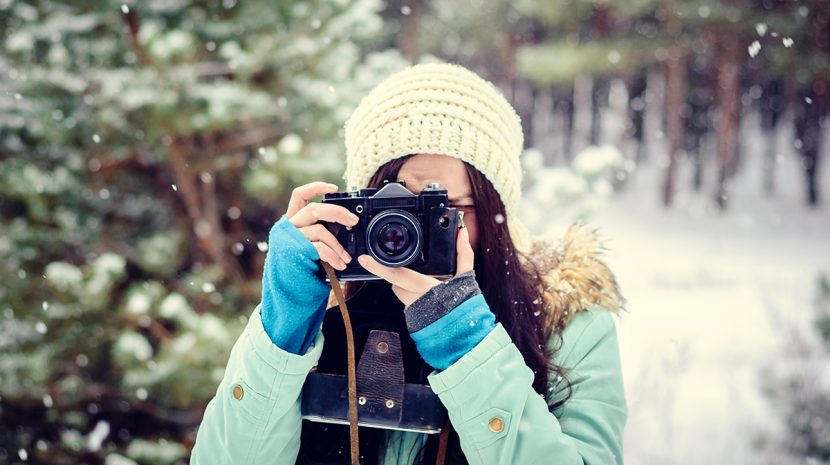How to take photos this winter that you’ll cherish forever
Back To Blog
- Bring the proper camera equipment.
Cold air will drain your batteries faster. Whether you’re shooting on your camera or using your phone, try to keep your equipment as warm as possible and bring a spare battery if you can. Keep your batteries in a pocket close to your body until you need to use them. Your body heat will help make them last longer.
You’ll also want to bring along a good camera bag. Find a bag designed to protect your camera equipment with extra padding. It’s even better if you bring one big enough to hold all your camera gear, plus other essentials, like a warm hat and scarf. A waterproof cover is a plus if you’re going to be out in the snow.
Bringing your tripod is a must, especially if you’re shooting the night sky. Aurora photography will require long exposures, which means you need a steady camera.
- Dress appropriately.
You’d hate to be close to the perfect shot and be forced to go inside to warm up. Worse, being out in the elements can be dangerous without the proper gear. Dress in warm layers; and, if you’re using the viewfinder on your camera, wear a scarf on your face so you don’t freeze your nose to the cold metal of the camera.
Wear good gloves that won’t get in the way when you’re using your camera. Find gloves thin enough to use the settings on your camera but warm enough to prevent your fingers from going numb. If shooting on your iPhone, find a pair of gloves that are touchscreen-friendly.
Don’t forget the hand warmers! Stuff your gloves, shoes and pockets with heat packs to stay warm longer. A quick tip? Grab an extra pack of hand warmers and share to make quick friends.
- Take control of your exposure.
The snow is beautiful, but its reflectiveness can really throw off your camera’s light meter. Whether you’re manually exposing your shot or using automatic settings, your camera relies on the internal light meter. Be very aware of the exposure you’re shooting in and if your images aren’t coming out quite right, start by experimenting with your aperture and shutter speed. Check your photos as you go, and make note of exposure levels that seem to be working.
When shooting at night, slow your shutter speed way down, especially if you’re shooting the northern lights. Again, make sure to use your tripod, though! Longer exposures will allow the lights to appear brighter in your photos.